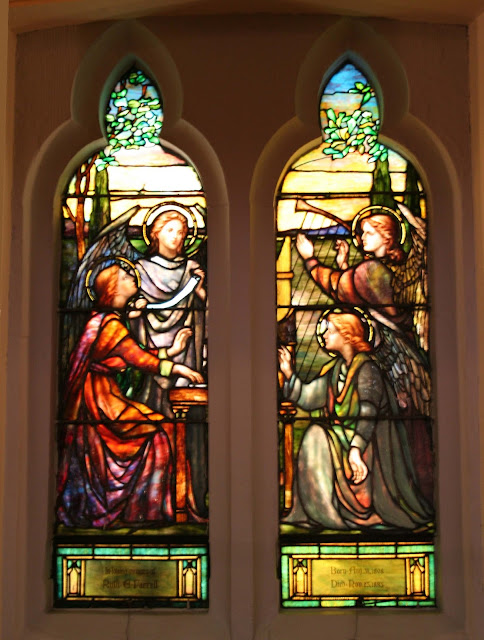Side note: an endowment is the investment fund that helps pay the bills for churches and other nonprofits. Standard recommended practice is to spend no more than 4% of your annual interest, rolling the rest back into the principle, helping it keep up with inflation. It's a lot like a retirement fund, except that it has to last for centuries. Dipping into the endowment principle should be done only under special circumstances--like a much-needed building expansion or emergency repairs--and the money should be replaced through fundraising as quickly as possible.
If St. John's does decide to sell their building, it will be a significant milestone in Waterbury's history. The Episcopal Church was the second church in Waterbury, dating back to 1740. They've been on the Green since 1795.
When Waterbury was founded, everyone belonged to the Congregational Church (which was the official church of Connecticut until 1818). The Great Awakening, a widespread religious revival of the 1720s and 1730s, led to many people leaving the Congregational Church and joining the Anglican Church (Church of England). After the Revolutionary War, Anglicans in the U.S. ditched their allegiance to the King and reformed as Episcopalians.
In 1740, about two dozen Waterbury families made the decision to leave the Congregational Church and found the town's first Anglican (Episcopal) church. Their first parish was named St. James, and their first church building was located on the corner of West Main and Willow Streets (where 7-11 is today).
In 1795, St. James was replaced by St. John's Episcopal Church in a new location--on the Green, directly opposite the Congregational Church (which was located approximately where the horse fountain is today). This was a major statement, and it established a symbolism that would last into the 1900s--if a community's church was located on the Green, in the heart of Waterbury, it symbolized the power and dominance that community had in the city. Throughout the 1800s, the wealthiest and most powerful people in Waterbury were almost always members of either the Congregational or Episcopal churches on the Green. In the 1920s, when Immaculate Conception was built in the center of the Green, Waterbury's Catholics took pride in having a church in such a symbolic and prominent location.
For more than 200 years, Waterbury's first Episcopal church has stood on the Green. What happens next is a mystery, but I'm sure there are a lot of people working hard to find a good resolution.
St. John's Church Architectural History
 |
| St. John's Church after the fire, 1868. (Courtesy of St. John's on the Green) |
 |
| Interior view of the Parish House, published in an architectural magazine during the 1920s. |
 |
| The vestibule. The dark wood and dim lights create a hushed atmosphere, forcing you to pause when you come into the building, if only to wait for your eyes to adjust to the dimness. |
 |
| The rose window, which can be seen from the Green at night when it's lit up, is a form of abstract art dating back nearly a thousand years. |











1 comment:
The Episcopal Church has seen its membership numbers plummet nationwide. Some former members have joined fundamentalist churches while more have simply become secular.
Peter
Post a Comment